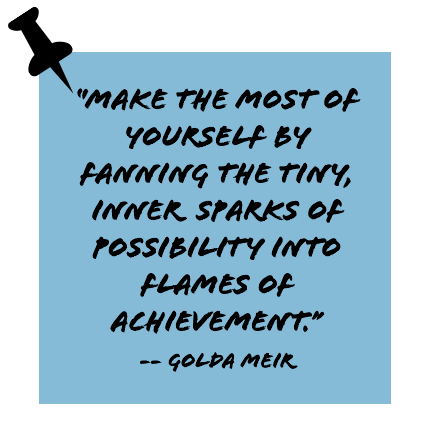
Part 4

Welcome back! Now that you’ve learned how to use free weights to increase strength, it’s time to get our bodies moving faster.
So, what is cardio anyway? Cardiovascular exercise is generally considered any workout that:
- Employs large muscle groups, like your legs, in compound (multi-joint) movements
- Increases demand on respiratory system, which increases your breathing rate
- Raises and sustains heightened heart rate throughout exercise
Cardio helps your lungs and heart work more efficiently. All that vigorous movement also lifts your mood through the release of feel-good endorphins.
Cardio, however, is just one component of a well-rounded exercise program. While this type of activity is definitely a calorie burner, unlike strength training, it doesn’t have the same lasting metabolic impact, CNN fitness contributor Dana Santas wrote on a story on cardio exercise.
To maximize the benefits, engage in 30 minutes (or more) of aerobic exercise at least three times per week in conjunction with weight training. Alternate days to avoid burning yourself out, Santas recommends.

There are so many cardio options to choose from, so pick the one that you like most that fits into your lifestyle. They include:
- Brisk walking
- Running
- Swimming
- Equipment-based (rower, elliptical, treadmill, stair climber)
- Aerobic-based group fitness classes
- Biking
For more details on these exercises, see Santas’ guide here.
With cardio, you’re going to break a good sweat, so it's important to stay hydrated with plenty of fluids. An enriched drink can help replace the electrolytes and salt you lose when sweating. That said, avoid sugary sports drinks with artificial colors and flavors; instead, look for an electrolyte-infused water brand as a healthier alternative.
If you’re planning on exercising outdoors, keep an eye on weather forecasts and dress accordingly. In cold weather, dress in layers and protect your head, hands, feet and ears. In hot weather, wear light-colored clothing and avoid the midday sun. And don’t forget to protect your skin year-round with sunscreen.
Remember, we’re in this for the long haul, so ease into each workout. Before you start, be sure to take a few minutes to warm up your body. Try this routine of yoga poses from Stephanie Mansour, CNN contributor and host of “Step It Up With Steph” on PBS. It takes five minutes but will bring you a long way toward achieving sustainable fitness goals.

Just two minutes of exercise before you work or study, research has found, could give your brain a power boost. Between two minutes and one hour of aerobic exercise -- such as running, walking or cycling -- improves learning and memory functions in young adults, the researchers said. Regular exercise, another study found, can increase thinking and verbal skills of older adults, too.
Did you know?
Regular cardio exercise has impressive benefits. Not only does it improve overall endurance and decrease your risk of many respiratory, cardiovascular and heart-related health issues, but research has shown that it can also improve sleep quality in middle-aged and older adults.



A weekly outdoor game night is a great way to get the whole family off the couch. Start with low-key lawn games like cornhole or croquet, and then rotate in faster-paced ones like pickleball, four square or spikeball. Take it to the next level with some basketball, or for younger kids, play horse or around the world.

Yoga for better sleep
Tonight, try tucking away your phone an hour before bedtime and instead wind down with this relaxing routine from Mansour. In fact, why not make it part of your nightly ritual? Regular yoga practice, according to the National Sleep Foundation, helps people with insomnia sleep for longer, fall asleep faster and fall back asleep more quickly in the middle of the night.
This workout targets stretching the large lower body muscles such as the hamstrings and hips that may be causing either aches that keep you awake or low back pain. The routine also focuses on intentional, deep breathing. Check out Mansour’s routine here. And for more ways to get a good night's rest, sign up for our Sleep, But Better series.

There is nothing quite like a soundtrack of solid beats to keep you motivated. That’s why our partners at CNN Underscored, a product reviews and recommendations guide owned by CNN, like these Powerbeats Pro Wireless Earphones for working out. Now we’re cookin’!

After cardio, spend a few minutes stretching out areas that feel tight while focusing on long, deep breaths to bring your respiration and heart rate down. As you wind down, take a moment to recall how you first felt when you started easing your way back into a routine. Haven’t you been feeling stronger and more energized lately? Your reboot is well underway!
Next up: We’ll take a closer look at biking -- and how to supersize your walk.
Checklist to go:
- Choose the cardio exercise that you’ll enjoy the most
- Stay hydrated
- For outdoor exercise, dress according to the weather
Important note: Before beginning any new exercise program, consult your doctor. Stop immediately if you experience pain.
All CNN Newsletters | Manage Profile
® © 2021 Cable News Network, Inc.
A WarnerMedia Company. All Rights Reserved.
One CNN Center Atlanta, GA 30303
Unsubscribe